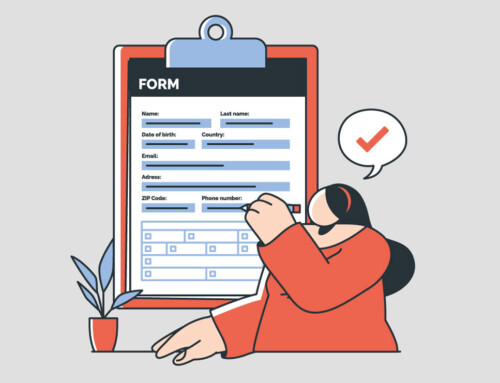Contents
Tagging Systems – Enhancing Case Management Efficiency
Effective case management is crucial for organizations to handle their workload efficiently and deliver timely services. One innovative approach to streamline this process is through the implementation of tagging systems. Tagging systems can significantly enhance case management efficiency by improving organization, searchability, and communication. By adopting this approach, organizations can ensure that they manage their cases more efficiently, leading to better outcomes and increased satisfaction for both staff and clients.
The Role of Tagging Systems in Legal Case Management
Improved Organization
Tagging allows cases to be categorized and labeled with specific keywords or phrases. This enables easy grouping of similar cases, ensuring that related information is quickly accessible. By organizing cases into relevant categories, teams can prioritize tasks more effectively and reduce the time spent searching for information.
Enhanced Searchability
With a robust tagging system, finding specific cases or documents becomes much simpler. Instead of manually sifting through files, users can search for tags related to the case, such as “urgent,” “pending,” or “resolved.” This capability speeds up the retrieval of information, allowing staff to respond to inquiries and resolve cases faster.
Streamlined Communication
Tags can also be used to indicate the status and priority of cases, facilitating better communication among team members. For instance, tags like “awaiting approval” or “requires follow-up” provide clear indications of the next steps needed. This ensures that everyone involved is on the same page, reducing misunderstandings and improving overall workflow efficiency.
Customization and Flexibility
Tagging systems offer flexibility, allowing organizations to create custom tags that suit their specific needs. This adaptability means that the system can evolve alongside the organization, accommodating new processes and requirements as they arise. Custom tags can also help in generating detailed reports, providing insights into case trends and areas needing improvement.
Integration with Other Systems
Modern tagging systems can integrate with other software tools, such as project management and customer relationship management (CRM) systems. This integration ensures that information flows seamlessly across different platforms, further enhancing efficiency and reducing duplication of effort.
Data Analysis and Reporting
Tagging systems also play a significant role in data analysis and reporting. By categorizing information, legal professionals can quickly generate reports and analyze trends across different cases. This analytical capability is invaluable for identifying patterns, understanding the outcomes of similar cases, and making informed decisions. Tags can be used to track various metrics, such as case duration, costs, and outcomes, providing insights that drive strategic planning and improve case management practices.
Challenges and Solutions in Implementing Tagging Systems
While tagging systems offer numerous benefits in legal case management and other fields, their implementation can present several challenges. However, with thoughtful planning and effective strategies, these challenges can be overcome. Here are some common challenges and their corresponding solutions:
- Inconsistent Tagging Practices
Solution: Develop a standardized tagging protocol. Create a comprehensive tagging guide that includes clear definitions and examples of tags. Train all team members on the importance of using standardized tags and provide ongoing support to ensure compliance. Regularly review and update the tagging guide to address any inconsistencies or new requirements.
- Tag Overload
Solution: Implement a streamlined tagging system. Limit the number of tags to those that are essential and most relevant. Encourage the use of broader, more inclusive tags instead of overly specific ones. Conduct regular audits of the tagging system to remove redundant or obsolete tags, ensuring that the system remains efficient and manageable.
- Integration with Existing Systems
Solution: Ensure compatibility and seamless integration. Select a tagging system that is compatible with existing software and platforms. Work closely with IT professionals to integrate the tagging system smoothly into the current infrastructure. Test the system thoroughly before full implementation to identify and address any potential issues.
- Maintenance and Scalability
Solution: Plan for ongoing maintenance and scalability. Assign dedicated personnel to manage and update the tagging system regularly. Implement processes for adding new tags and categories as needed, ensuring that the system can grow with the organization. Conduct periodic reviews to assess the system’s performance and make necessary adjustments.
- Security and Privacy Concerns
Solution: Implement robust security measures. Ensure that the tagging system complies with relevant data protection regulations and industry standards. Use encryption and secure access controls to protect sensitive information. Regularly audit the system for vulnerabilities and address any security concerns promptly.
- Over-reliance on Manual Tagging
Solution: Leverage automation and AI technologies. Utilize automated tagging tools that use machine learning algorithms to categorize documents accurately. These tools can significantly reduce the manual effort required and improve tagging consistency. Regularly monitor and refine the automated system to ensure its accuracy and effectiveness.
- Resistance to Change
Solution: Foster a positive change management approach. Communicate the benefits of the tagging system clearly to all stakeholders. Involve team members in the planning and implementation process to gain their buy-in and address any concerns. Highlight success stories and positive outcomes to demonstrate the system’s value.
Tagging Systems vs. Traditional Filing Systems
In the realm of information management, both tagging systems and traditional filing systems offer distinct approaches to organizing, storing, and retrieving data. Understanding the strengths and limitations of each can help organizations choose the most effective method for their needs. Here is a comparative analysis of tagging systems versus traditional filing systems:
Organization and Structure
Tagging Systems
- Tags allow for multiple categorizations of a single document, enabling more dynamic organization. A document can be tagged with several keywords related to different aspects, such as subject matter, date, author, and relevance.
- Unlike traditional filing, tagging systems are not limited by hierarchical structures. This means information can be organized in a way that is intuitive to different users without needing to fit into a rigid folder structure.
Traditional Filing Systems
- Traditional filing relies on a predefined hierarchical structure, typically organizing documents into folders and subfolders. This can be helpful for maintaining a clear and consistent organizational scheme.
- Once a document is placed in a specific folder, it may not be easily accessible from multiple categories unless it is duplicated, which can lead to redundancy and inefficiency.
Accessibility and Retrieval
Tagging Systems
- Tags facilitate advanced search capabilities, allowing users to quickly locate documents based on various criteria. Searching for a keyword retrieves all documents associated with that tag, improving retrieval speed and accuracy.
- Tags enable effective cross-referencing, making it easier to find related documents without navigating through multiple folders.
Traditional Filing Systems
- Retrieval in traditional filing systems often requires navigating through a hierarchical structure, which can be time-consuming, especially if the exact location of the document is unknown.
- In physical filing systems, documents are stored in specific locations, and retrieving them can be labor-intensive, particularly if they are misfiled.
Scalability and Maintenance
Tagging Systems
- Tagging systems can easily scale with the volume of documents. New tags and categories can be added without reorganizing existing documents.
- Regular maintenance is required to ensure consistency in tagging practices. However, automated tagging tools can reduce the manual effort involved in maintaining the system.
Traditional Filing Systems
- Expanding a traditional filing system often involves creating new folders and reorganizing existing documents, which can be cumbersome.
- Physical filing systems require regular upkeep to manage space and ensure documents are filed correctly. Digital filing systems need periodic reorganization to maintain efficiency.
Collaboration and Sharing
Tagging Systems
- Tagging systems enhance collaboration by allowing team members to easily share and access tagged documents. Standardized tags ensure everyone can find relevant information quickly.
- Changes to tags can be made in real-time, ensuring that all users have access to the most current information.
Traditional Filing Systems
- Collaboration in traditional filing systems can be challenging, especially with physical files. Digital folders shared across teams may still suffer from version control issues.
- Updates in traditional filing systems, particularly physical ones, are not instantaneous and require manual intervention, leading to potential delays in accessing the latest information.
Cost and Implementation
Tagging Systems
- Implementing a tagging system may require an initial investment in software and training. Automated tagging tools can add to the cost but provide long-term benefits in efficiency.
- Maintenance and periodic updates are necessary to keep the system effective. However, the long-term savings in time and improved productivity can offset these costs.
Traditional Filing Systems
- Traditional filing systems, particularly physical ones, may have lower initial costs as they require basic office supplies and storage solutions.
- Over time, the costs associated with space, physical storage, and labor for filing and retrieval can add up, potentially exceeding the initial savings.
Overall, tagging systems and traditional filing systems each have their merits and limitations. Tagging systems offer flexibility, enhanced searchability, and improved collaboration, making them well-suited for dynamic and large-scale information management. Traditional filing systems, while simpler and potentially less costly to implement initially, can become cumbersome and less efficient as the volume of documents grows.
For organizations seeking a more modern and efficient approach to document management, especially those dealing with large volumes of data, tagging systems are likely the better choice. However, for smaller organizations or those with straightforward filing needs, traditional filing systems may still be adequate.
Measuring the Impact of Tagging Systems on Case Management
Evaluating the effectiveness of tagging systems in case management is essential to ensure they are providing the desired benefits. By assessing key performance indicators (KPIs) and conducting qualitative analysis, organizations can measure the impact of tagging systems on their operations. Here are some methods and metrics for measuring this impact:
1. Key Performance Indicators (KPIs)
Search and Retrieval Efficiency
- Measure the average time it takes for users to locate specific documents using the tagging system compared to traditional methods.
- Track the percentage of successful searches where users find the correct documents on the first attempt.
Productivity and Time Savings
- Monitor the amount of time legal professionals spend on organizing, filing, and retrieving documents before and after implementing the tagging system.
- Measure the time required to process cases, from initiation to closure, to identify any reductions due to improved document management.
Collaboration and Communication
- Track how often documents are accessed and shared among team members, indicating improved collaboration.
- Conduct surveys to gauge user satisfaction with the tagging system, focusing on ease of use, accessibility, and overall effectiveness.
Error Reduction
- Record the number of instances where documents are misfiled or lost. A decrease in such incidents indicates improved accuracy in document management.
- Measure the time spent correcting document management errors, such as misfiling or duplicate entries.
2. Qualitative Analysis
User Feedback
- Conduct interviews and focus groups with users to gather detailed feedback on their experiences with the tagging system. Identify specific pain points, benefits, and areas for improvement.
- Develop case studies that illustrate the impact of the tagging system on specific cases or projects, highlighting improvements in efficiency, collaboration, and outcomes.

Process Improvement
- Analyze changes in workflow processes to determine how the tagging system has streamlined tasks and improved overall case management.
- Identify best practices and success stories from teams using the tagging system effectively. Share these practices across the organization to promote broader adoption.
3. Comparative Analysis
Before and After Comparison
- Establish baseline metrics for key performance indicators before implementing the tagging system. Compare these metrics with data collected after implementation to assess improvements.
- If possible, create control groups that continue using traditional filing systems. Compare their performance metrics with those using the tagging system to isolate the impact of the new system.
Industry Benchmarks
- Compare the organization’s performance metrics with industry benchmarks or similar organizations that have implemented tagging systems. This comparison can provide context and highlight areas for further improvement.
4. Continuous Improvement
Regular Audits and Reviews
- Conduct regular audits of the tagging system to ensure it is being used effectively and consistently. Identify any issues or discrepancies that need to be addressed.
- Provide ongoing training and support to ensure users are comfortable with the tagging system and aware of any updates or changes.
Feedback Loops
- Establish mechanisms for continuous feedback from users, such as suggestion boxes or regular check-ins. Use this feedback to make iterative improvements to the system.
- Regularly update the tagging system based on user feedback and changing organizational needs. Adapt the system to incorporate new technologies and best practices.
Summary
Effective case management is essential for organizations to manage their workload efficiently and deliver timely services. Implementing tagging systems is an innovative approach that enhances case management by improving organization, searchability, and communication. Tagging allows cases to be categorized and labeled with specific keywords, facilitating easy grouping and quick access to related information. This system also enables efficient searches, faster information retrieval, and clear communication among team members by indicating the status and priority of cases. Customizable and flexible, tagging systems can integrate with other software tools and support data analysis and reporting. Although challenges such as inconsistent tagging practices and tag overload can arise, these can be mitigated with standardized protocols, streamlined systems, and automation technologies. Overall, tagging systems offer a modern, scalable, and efficient alternative to traditional filing systems, leading to better outcomes and increased satisfaction for both staff and clients.
Disclaimer: The content provided on this blog is for informational purposes only and does not constitute legal, financial, or professional advice.







